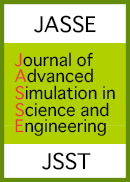Volume 8, Issue 2
Displaying 1-6 of 6 articles from this issue
- |<
- <
- 1
- >
- >|
Special Section on Recent Advances in Simulation in Science and Engineering
Preface
-
2021Volume 8Issue 2 Pages I-II
Published: 2021
Released on J-STAGE: October 05, 2021
Download PDF (116K)
Special Section on Recent Advances in Simulation in Science and Engineering
-
2021Volume 8Issue 2 Pages 163-172
Published: 2021
Released on J-STAGE: July 07, 2021
Download PDF (1357K) -
2021Volume 8Issue 2 Pages 173-193
Published: 2021
Released on J-STAGE: September 23, 2021
Download PDF (3221K) -
2021Volume 8Issue 2 Pages 194-210
Published: 2021
Released on J-STAGE: August 25, 2021
Download PDF (1628K) -
2021Volume 8Issue 2 Pages 211-222
Published: 2021
Released on J-STAGE: September 23, 2021
Download PDF (1332K)
Regular Section
Papers
-
2021Volume 8Issue 2 Pages 223-236
Published: 2021
Released on J-STAGE: November 25, 2021
Download PDF (2839K)
- |<
- <
- 1
- >
- >|
